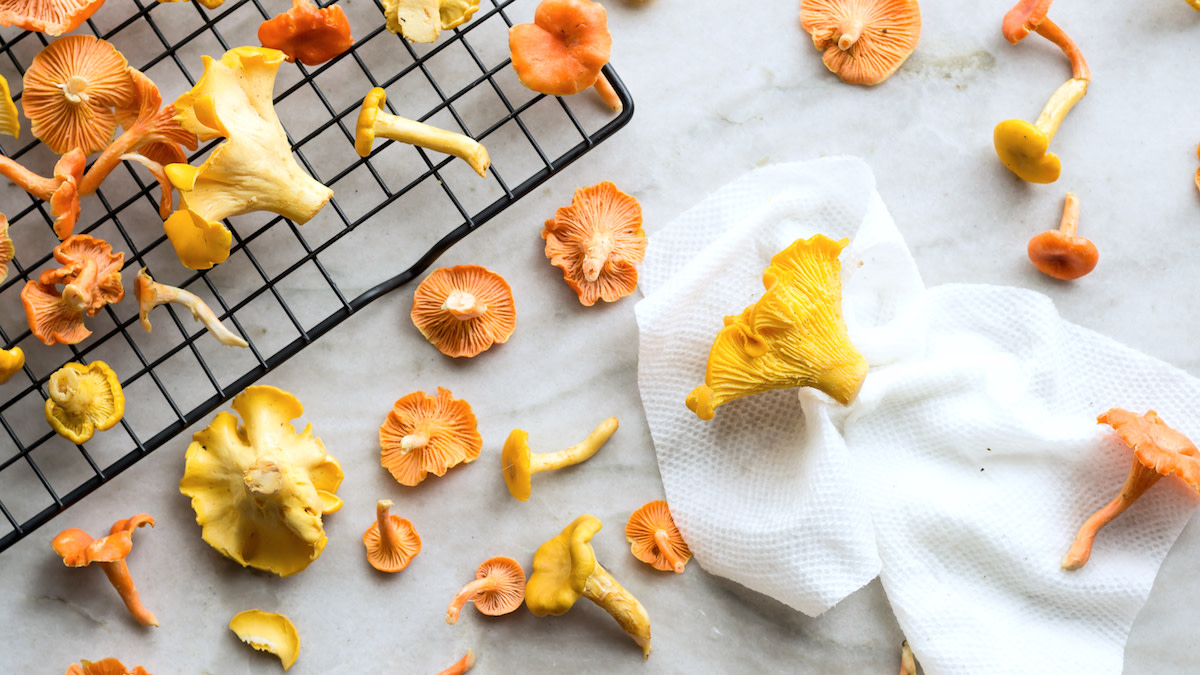
Chanterelles are one of nature's most delicious gifts, especially when sautéed with garlic and butter. They fruit from the ground following a good rain in warm weather, and often that rain will kick lots of dirt up under those delicate frilled edges. While cleaning chanterelles off without damaging them can be difficult, I have developed a few good practices for cleaning chanterelles.
Cleaning any type of mushroom is a two-step process. The first step is getting rid of any dirt, and the second—and equally important—step is properly drying the fungi. Mushrooms are like sponges; they soak up a lot of water. Extra moisture prevents proper browning, so if they aren’t dried well, they can develop a rubbery texture and lack flavor.
I never submerge cultivated mushrooms under water or even wash under running water for this reason. Basic baby bella or white button mushrooms are generally pretty clean and only need a good brush with a slightly damp paper towel to clean. If you're lucky enough to find wild mushrooms in pristine condition, you can take this approach. In the area where I pick chanterelles, the soil has a sandy loam tilth. Because of this soil structure, a heavy rain will push up tiny sand particles into the ridges, or “false gills” of the mushroom so they almost always need to be washed well with water.
If you only have a handful of chanterelles, you can rinse under very low running water in the sink. The edges are delicate and a heavy stream of water can damage them. After rinsing, I like to use a soft-bristle toothbrush to remove any grit stuck inside the ridges and then give them a quick rinse again. To dry, I blot them with a paper towel carefully and let them air dry until they're ready to cook.
If you collect several pounds of chanterelles, handling each mushroom one-by-one is far too time consuming. In these instances, I’ll soak them in a large bowl of water, swish them around with my hands, and let the dirt come to the surface. I then pour the water out and repeat the process. Finally, if needed, I’ll transfer them to a colander and run fresh water through to make sure they’re thoroughly clean.
The best way to dry a large amount of mushrooms is to place them inside of a salad spinner and wring the excess water out. Unfortunately, this can damage some of the bounty, but it’s the best way to dry them in large volume. Next, I’ll spread the mushrooms across a wire rack or tray lined with a towel to air dry for several hours. They can also spend up to a day in the refrigerator before cooking. After they have been properly dried, transfer them to a brown paper bag for storage. The paper allows the mushrooms to breathe so they don’t get slimy and it also keeps some moisture trapped inside so they don’t dry out and turn woody. Mushrooms can last about a week when properly stored this way.
Whether your chanterelles can't seem to clean up, get torn in the process, or simply refuse to dry, try out these methods to clean your mushrooms next time. You’ll have a better end result when cooking and will also extend their shelf life.





